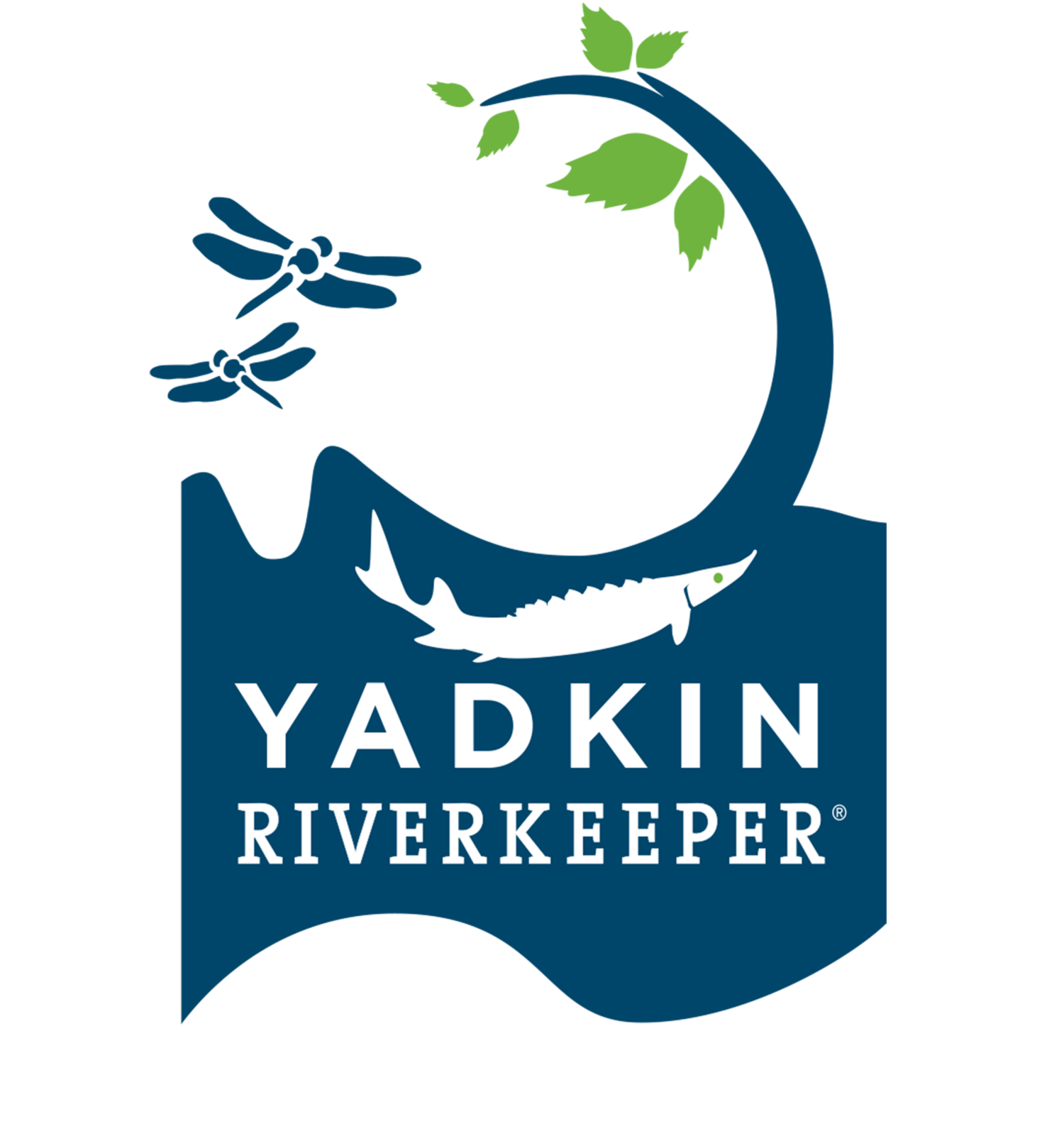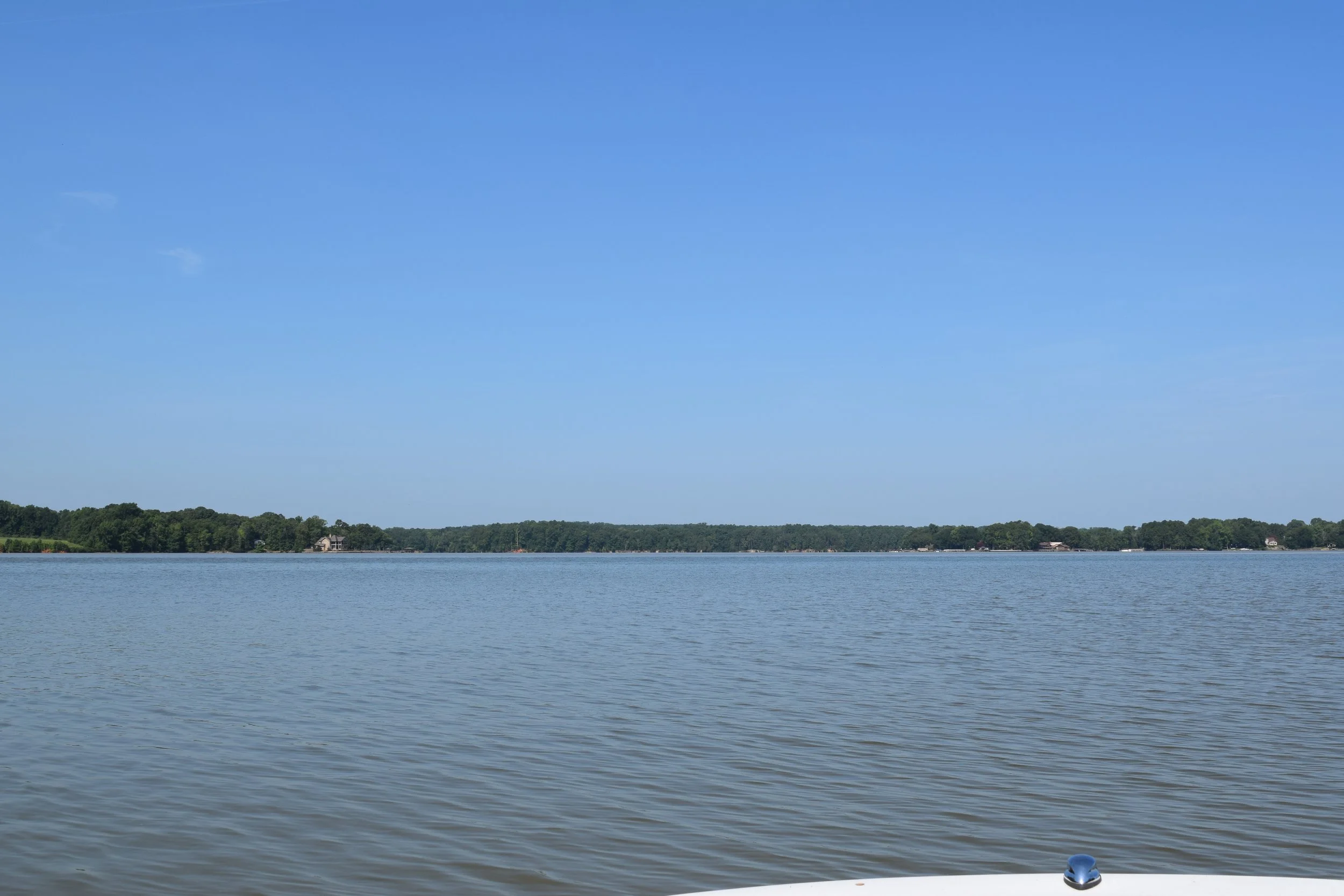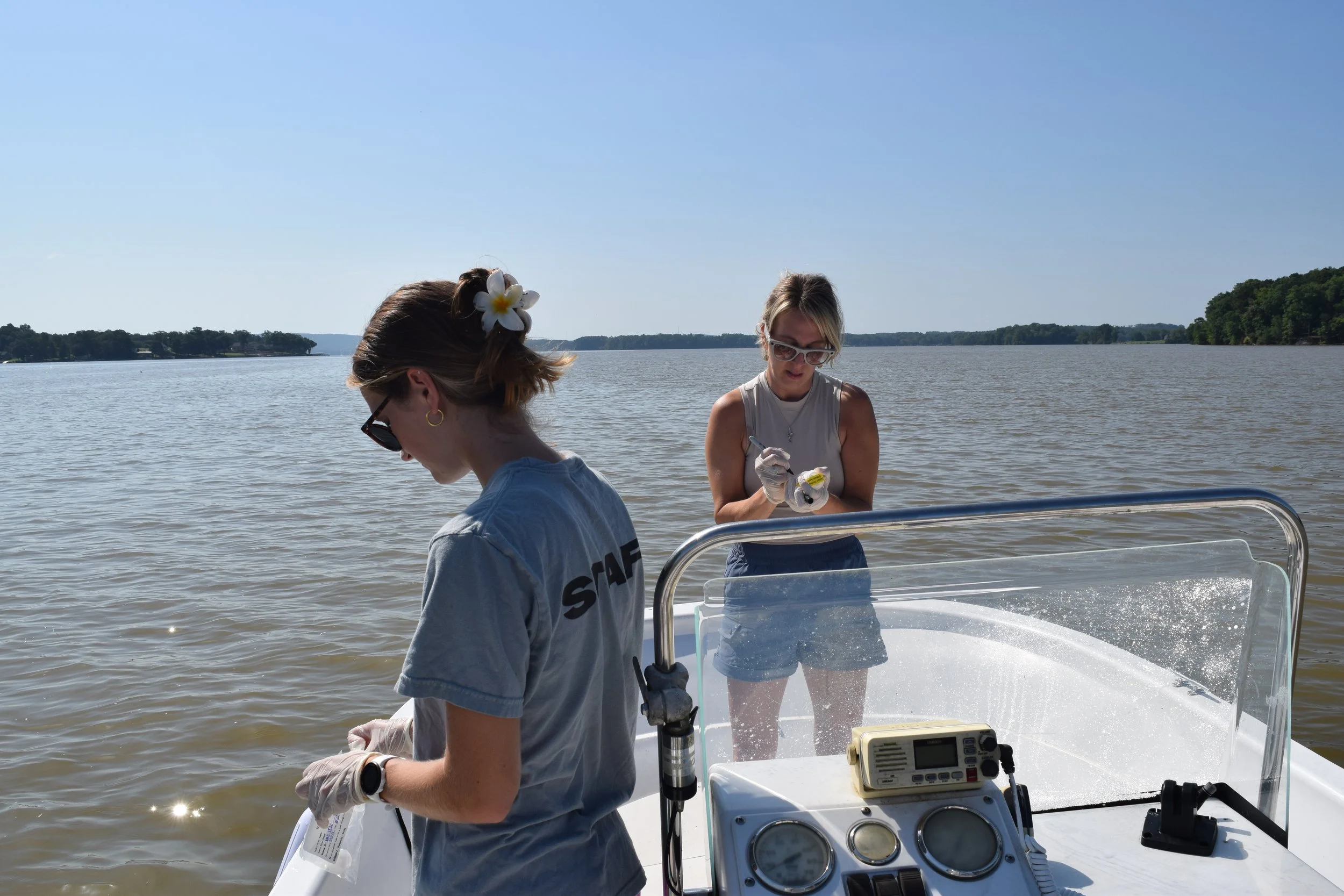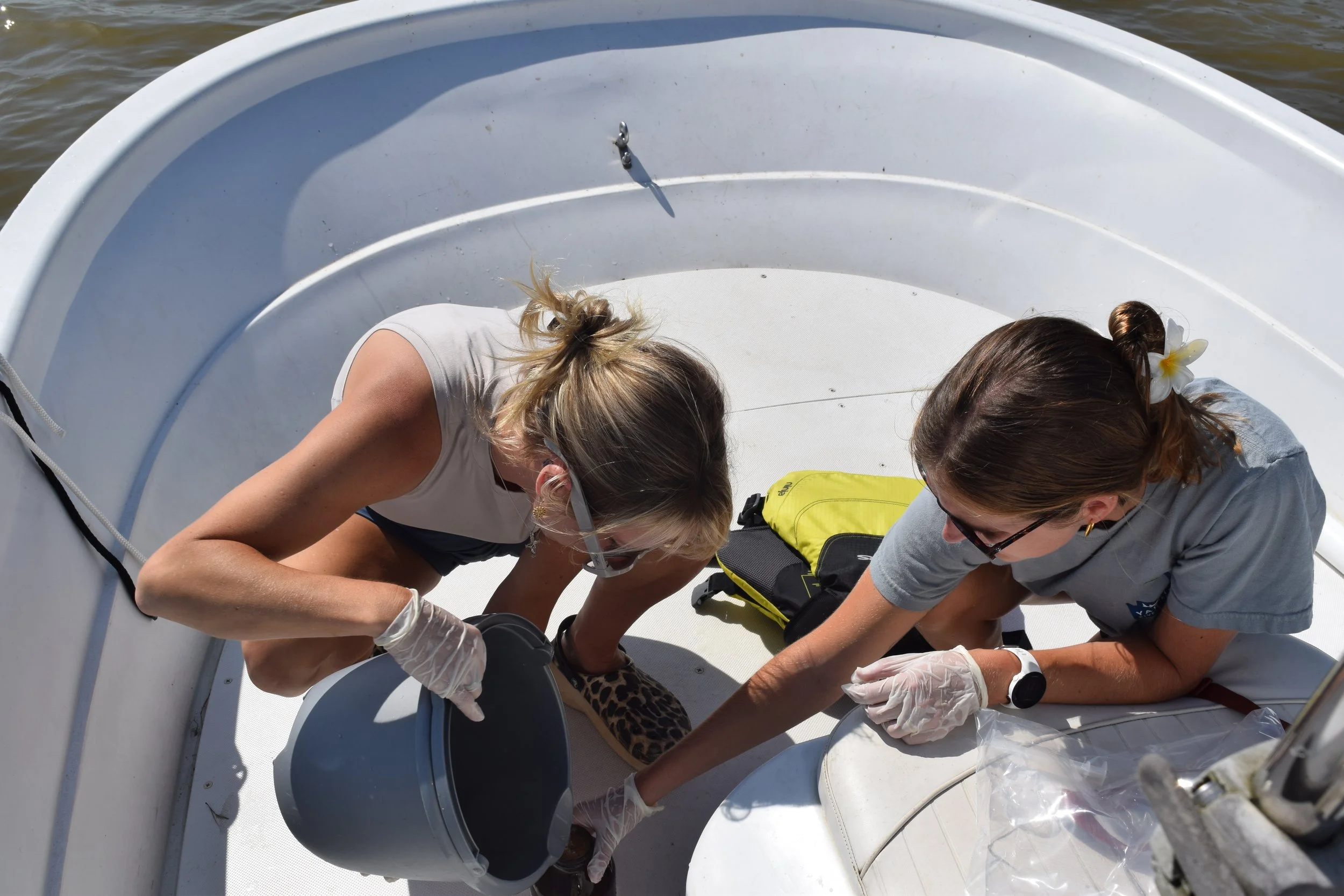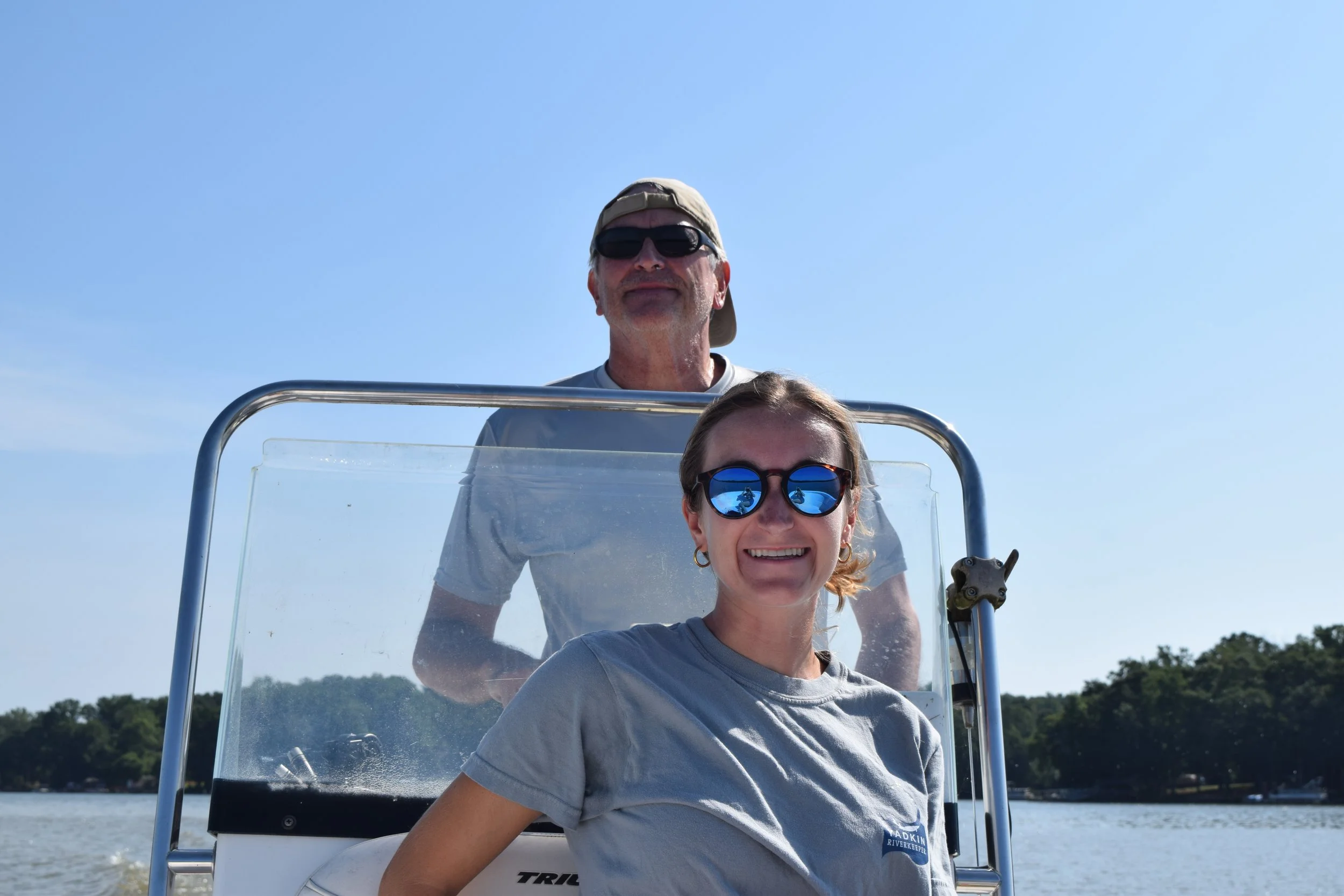By Stephanie Stephens, YRK Water Quality Advocate
Over the last 100 years, excessive nutrient and sediment loads have been brought downstream from stormwater, wastewater and agricultural runoff into the Yadkin and South Yadkin Rivers into High Rock Lake (HRL), leading the NC Department of Environmental Quality and the US Environmental Protection Agency to designate HRL as impaired. These conditions also have led to harmful algal blooms (HABs), which may be dangerous to people, pets and wildlife. Elevated chlorophyll-A levels have exceeded the state standard of 40ug/L, indicating high levels of nutrient pollution, resulting in the state setting a site-specific chlorophyll-A standard for HRL at 35ug/L.
Yadkin Riverkeeper (YRK) has been monitoring nutrients on High Rock Lake since 2018 and began including chlorophyll-A sampling in 2023. Samples were first collected at multiple locations on High Rock Lake and then narrowed to one site, the NCDEQ point of compliance, site YAD152C which is located in the middle channel of the lake. In 2023, chlorophyll-A peaked at 46.8 ug/L in August, with a geometric mean of 36.23 ug/L, over four months of sampling. In 2024, chlorophyll-A peaked at 54.9 ug/L in July, with a geometric mean of 35.35 ug/L, over seven months of sampling. YRK is currently conducting nutrient, bacteria and chlorophyll-A sampling for the algae growing season, which began in April and ends in October.
Later this year, YRK plans to host regional workshops to increase awareness of the need for the HRL Rules and build support in the community on best practices and strategies that can be implemented in accordance with the HRL Rules. These workshops will also help to educate the public on the issues of non-point source pollution the HRL Rules are designed to address.
Finding a solution to the pollution is a complex matter as there are many contributing sources. The development of the High Rock Lake Nutrient Management Strategy, or High Rock Lake Rules, is a necessary measure to design a plan and work with stakeholders to achieve a reduction in nutrient levels, chlorophyll-a and consequently, control HABs in High Rock Lake.
In May 2025, the NC Division of Water Resources convened Phase 2 of the High Rock Lake Nutrient Management Strategy Steering Committee process. The Steering Committee met to discuss the release of the Purpose and Scope Rule Draft and the Riparian Buffer Rule Draft, designed to reduce the nitrogen and phosphorus contributions into all streams, rivers and lakes of the Upper Yadkin/High Rock Lake Watershed.
The Scope and Purpose Rule Draft has a few important takeaways:
All lands and waters draining into the Yadkin River above High Rock Lake are referred to as the High Rock Lake watershed in the proposed draft. The High Rock Lake Rules will require controls that reduce phosphorus and nitrogen loads from significant sources of these nutrients throughout the High Rock Lake watershed.
High Rock Lake and all waters draining into it shall be classified as Nutrient Sensitive Waters.
The entire High Rock Lake watershed will be designated a critical water supply watershed and through the High Rock Lake nutrient strategy given additional, more stringent requirements than the state minimum water supply watershed management requirements.
Within ten years after the rules effective date, the objective of this strategy is to achieve and maintain reductions of 50 and 25 percent in average annual mass loads of phosphorus and nitrogen, respectively, delivered into High Rock Lake from point sources in the High Rock Lake watershed.
An overarching goal of the HRL Rules iso reduce nutrient loading from nonpoint sources, including agricultural operations in the High Rock Lake watershed with nutrient-over enriched soils and a documented risk of nutrient loss, as well as reduce stream destabilization and nutrient loading by pastured cattle.
The HRL Rules are designed to limit or neutralize nutrient loading from newly developed lands by managing stormwater in a way that protects the hydrologic stability of receiving streams
The Rules will annually reduce loading from existing developed lands and other unregulated sources
The Rule will perpetually protect existing riparian vegetation to ensure stream stability and maintain riparian nutrient removal functions.
In addition to the Scope and Purpose Rule Draft release, the first draft of the Existing Development/Managed Land and the Riparian Buffer Rule Draft have been released for review by the Stakeholders Steering Committee. The initial draft of the Agricultural Rules, which address livestock exclusion (getting cows out of the river) requirements and poultry waste management have been reviewed by the Agricultural Technical Advisory Group and will be shared with the Stakeholders Steering Committee later this year. The buffer rules are intended to protect existing riparian buffers throughout the High Rock Lake watershed but are not retroactive. The buffer rule “grandfathers” in existing land uses and does not include properties where development, farming or buildings have already been established, prior to this rule going into effect.
The Protection of Existing Riparian Buffers Rule Draft has a few important takeaways:
This rule applies to all landowners and other persons including local governments. state and federal entities conducting activities within or outside of, with impacts upon riparian buffers in the High Rock Lake watershed.
Identifying regulated riparian buffers means identifying a surface water within the High Rock Lake watershed on a USGS National Map, the most recent version of the published manuscript of the soil survey map that shows stream layers prepared by the National Resources Conservation Service of the United States Department of Agriculture, or other maps approved by the Environmental Management Commission.
This rule applies to activities conducted within, or outside of with impacts upon, 50-foot-wide riparian buffers directly adjacent to surface waters in the High Rock Lake watershed (intermittent and perennial streams, lakes, reservoirs and ponds), excluding wetlands.
There are exemptions to these rules within the drafts and public comments on all drafts will be available prior to their final publication. In the coming months, the next portion of Agricultural Rules, Cattle Management and Land Application Drafts, will be released, followed by all point source rule drafts for wastewater treatment plants. Yadkin Riverkeeper Edgar Miller is a High Rock Lake Nutrient Management Steering Committee member and serves for the protection of High Rock Lake and its surrounding communities. The finalization of the High Rock Lake Nutrient Management Strategy is not expected until 2026.
